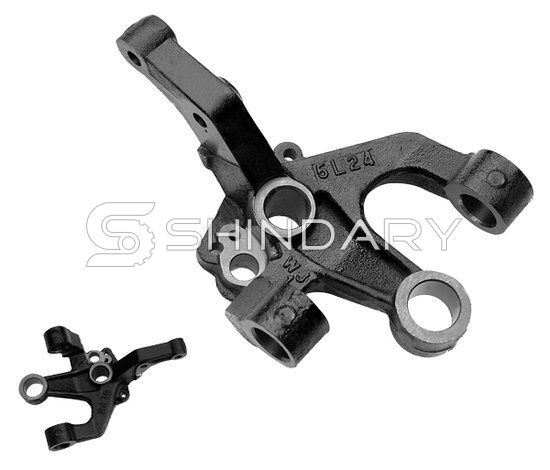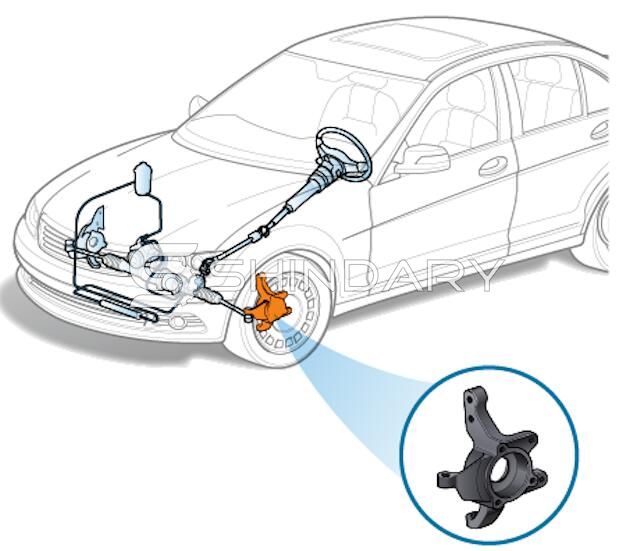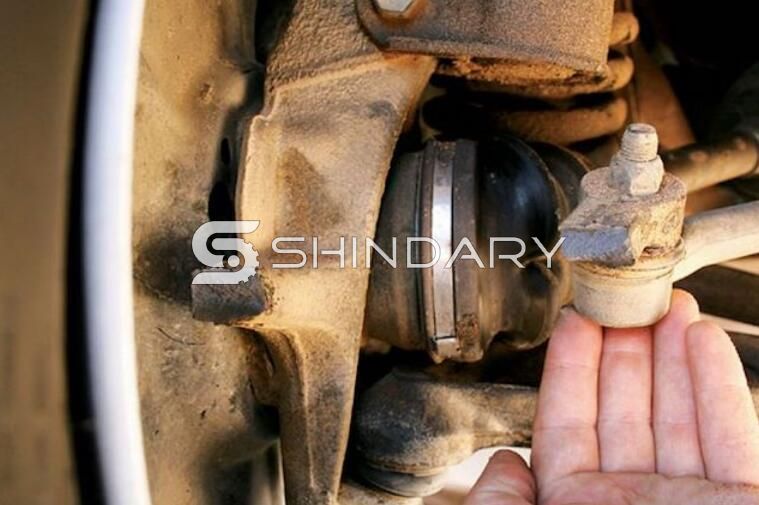Copyright © Shindary Automotive Parts Co., Ltd. All Rights Reserved
The steering knuckle is chunky piece of steel with several protruding arms located right behind your front wheels. It connects the wheel hub (or spindle) to the suspension. The disc brake caliper mounts to the knuckle.
So what exactly is the steering knuckle and what does it do? Let's find out.
Steering shaft knuckle is an important part of car steering, which can make the car run stably and transmit the driving direction sensitively.

The function of the steering wheel knuckle is to transmit and bear the front load support of the car and drive the front wheel to rotate around the king pin to turn the car. In the driving state of the car, it bears variable impact loads, so it is required to have high strength.

The steering knuckle is the hinge of the wheel, generally in the shape of a fork. The upper and lower forks have two coaxial holes for installing the kingpin, and the steering knuckle journal is used to install the wheel. The two ears of the pin hole on the knuckle are connected with the fist-shaped parts at both ends of the front axle through the king pin, so that the front wheel can deflect a certain angle around the king pin to turn the car. In order to reduce wear, a bronze bushing is pressed into the pin hole of the steering knuckle, and the lubrication on the bushing is lubricated by injecting grease with the grease nipple installed on the extended steering knuckle. Equipped with bearings. There is also an adjusting shim between the upper and lower parts of the steering knuckle and the fist-shaped part to adjust the gap there between.
In order to ensure the stability of the car running in a straight line, the lightness of the steering knuckle and the reduction of wear between the tire and the parts, the steering wheel knuckle and the front axle must maintain a certain relative position with the frame, which has a certain relative position. The installation of the position is called steering wheel alignment, also known as front wheel alignment. The correct front wheel positioning should be done: the car can run stably in a straight line without swinging, the force on the steering wheel is not large when turning, the steering wheel can automatically return to the front after turning, and the tires and the ground do not slip to reduce fuel consumption and extend tire life.
The top and bottom arms of the steering knuckle attach to the suspension system via pivots called "ball joints". The ball joints let the knuckle pivot left or right. They also keep the knuckle in a vertical position. The aluminum steering knuckle also has a lateral arm that connects to a tie rod.
When you steer, the tie rod either pushes the lateral arm outward or pulls it inward, depending on the direction the steering wheel is turned. There are tie rods on both sides of a vehicle. When the lateral arm on one side is pushed outward, the other lateral arm is pulled inward at the same time. This turns the knuckles and front wheels in unison.
A steering system is very sturdy. During normal use they usually last the life of the vehicle. However, if you have a minor collision, hit a really big pothole, or slide into a curb, you might damage the knuckle. If the knuckle breaks, your vehicle will be obviously disabled.
When you have a cracked or bent steering knuckle, your vehicle might seem like you could still drive it. But you really shouldn't. There are a few things could go wrong.
● Your wheel alignment will be thrown out of whack. This leads to uneven tire wear and poor handling.
● The damaged part can put additional stress on the ball joints. Ball joints can break suddenly.
If a ball joint breaks, it will suddenly become very difficult to steer, and you may loose control of the vehicle. This is obviously very dangerous. If you suspect that a steering knuckle is damaged, you should inspect it immediately.

Removing the wheel and tire (or lifting the vehicle) to visually inspect your steering knuckle can be a cumbersome task. The good news is that there are symptoms to tell you when it's time to take a look. The sooner you detect the following symptoms and catch the problem, the better.
● One front wheel appears more tilted than the other.
● Squealing noise when turning.
● The vehicle pulls to the left or right.
● Crooked steering wheel when driving straight.
● The vehicle corners worse when steering in one direction than the other.
The best way to determine for sure if your steering knuckle is bent or cracked is to visually inspect it and/or to compare it to the other steering knuckle.
A broken steering knuckle is unsafe to drive on at all. It needs immediate replacement. With the right tools and a comprehensive tutorial you should be able to replace it in a matter of two or three hours. You can buy an OEM steering knuckle online at a reasonable price.
Keep in mind that replacing a steering knuckle will likely affect your car's alignment settings. We suggest taking your car in for an alignment after doing the job.
Shindary Automotive Parts Co., Ltd.